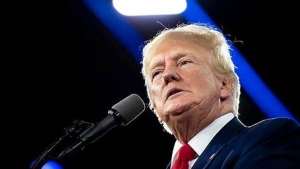The S&P 500 index closed above the 5,000-point mark for the first time in history last Friday, after fourteen weeks of growth in the last fifteen, during which the main basket of shares in the United States marked an advance of 22%.
Declining inflation, better-than-expected corporate reports and a robust economy fueled the US market's rally this year. According to the latest data, the government adjusted inflation for December to 0.2% month-on-month, compared to 0.3% as initially reported, a decrease that, although modest, confirms the moderation of inflation, which gives more freedom to the Federal Reserve to start cutting of interest this year, writes CNBC.
By the end of last week, 332 companies in the S&P 500 index had published their results for the fourth quarter of 2023, with about 80% reporting above analysts' estimates, according to LSEG data, the American publication also notes.
• What does hitting the 5,000 point mark mean for the S&P 500?
From a fundamental point of view, the 5,000 point level doesn't necessarily mean anything, but from a psychological perspective it does, and the fact that the index is making new records shows that investors have confidence in the US economy.
Adam Turnquist, chief technical strategist at LPL Financial, believes the S&P 500 hitting the 5,000-point mark is positive for stocks, according to CNBC. "A close above this heavily watched level will create headlines, further fueling the fear of missing out (FOMO)," Turnquist said. "Besides a potential boost to market sentiment, round numbers like 5,000 often provide psychological areas of support or resistance."
According to the strategist, historically, after crossing a major threshold, the S&P 500 has continued to rise over the next year. Since 1968, the index has surpassed nine such milestones, in 78% of cases continuing its advance in the following twelve months, with an average increase of 10.4%.
And Ryan Detrick, chief strategist at the Carson Group, sees the index crossing the 5,000-point threshold as something positive for the market. "What does the 5,000 level mean? On the surface not much, we know that. But psychologically that's what matters," Detrick told Bloomberg TV.
In his opinion, the event represents a new catalyst for the continued growth of the shares. "We think this is a pretty strong signal that we are still in a bull market. We've been saying that for a while and we're on board," the strategist added, according to the source.
On the other hand, if the index fails to convincingly break this threshold, a resistance zone may appear, which acts as a barrier to the price increase. "There were times when such thresholds were exceeded for a short period, only for the quotation to retreat or even a correction to appear. Given how stretched the market is right now, that's what I expect," said Mark Arbeter, technical analyst and president of Arbeter Investments, quoted by MarketWatch.
• The index reached a Forward Price to Earnings of 20.4, above the historical average of 15.7, according to Reuters, which takes data provided by LSEG
As the S&P 500 hits new all-time highs, valuations soar to new heights, Reuters writes. The Forward Price to Earnings ratio, which compares the stock's valuation to earnings estimates, had reached 20.4 for the S&P 500 last week, well above the historical average of 15.7, according to LSEG Datastream.
It's not unusual for valuations to rise as prices appreciate, and they can stay high for a long time before returning to lower levels. It's just that some investors find the idea of buying when valuations are high and rising less appealing.
"The valuation of around 20 for the S&P 500 is somewhat excessive and is based on either rising earnings or falling rates, which we may not see until the latter parts of the year," said Peter Tuz, the president of Chase Investment Counsel, quoted by Reuters.
• Jeremy Siegel: "The index is trading at 20 times earnings, which isn't cheap, but it's certainly not like 1999 or 2000"
Economics professor Jeremy Siegel doesn't think the valuations are overblown and thinks the S&P 500 could rise another 8% from current levels by the end of the year, which would take the S&P 500 to around 5,400 points, according to Business Insider.
This, even if some strategists compare today's valuations with those during the dot-com bubble of 1999-2000, but Siegel is not convinced. "Something very important is different. At the beginning of 2000, the index was at a level of 30 times the profits (n.r. Price to Earnings - PER), and the technology sector even more, at 60/70. And interest rates were higher than today. Now the index is trading at 20 times earnings, which isn't cheap, but it's certainly not like it was in 1999 or 2000," Siegel said, according to the source.
According to the economics professor, investors should focus on "value" type shares and those of companies with low stock market valuations (eng. small-cap stocks), which are traded at profit multiples of 15 and 12, respectively. In his opinion, they have better earnings prospects in the next three to five years.
Siegel's target for the S&P 500 is similar to that expressed by Ed Yardeni, president of Yardeni Research, last December. According to the market veteran, a robust economy, moderating inflation and rising productivity will support stocks this year. John Stoltzfus, chief investment strategist at Oppenheimer had a target of 5,200 points for the index this year, Tom Lee of Fundstrat saw the index at 5,100 points, a target similar to that of Goldman Sachs. In contrast, JP Morgan saw the index falling to 4,200 points, while Morgan Stanley had a target of 4,500 points, according to an article published by Business Insider last December.
• Angelo Kourkafas: "We believe that the risk of a hard landing in the economy or a recession is getting lower as Fed policy gradually becomes less restrictive"
Angelo Kourkafas, CFA, senior investment strategist at Edward Jones Investments, expects the bull market to remain intact this year, according to his latest weekly analysis, published on the financial services firm's website.
"We believe that the risk of a hard landing in the economy or a recession is getting lower as Fed policy gradually becomes less restrictive (...). While consumption appears to be slowing, other sectors of the economy may accelerate in the second half of the year," the strategist wrote in his latest editorial.
The fact that fewer banks are tightening lending conditions, which may suggest that the bottom of the credit cycle has been passed, along with increased productivity are among the positive elements listed by Kourkafas. "The context given by inflation and economic growth remains favorable, but of course this does not exclude episodes of volatility and corrections, which usually appear after strong market rallies. We expect any economic slowdown to be moderate and the bull market to remain intact this year," the strategist pointed out.
• Michael Smith, AllSpring Global Investments: "We are at a historic high in terms of the amount of money invested in a very small number of stocks"
As the S&P 500 hits all-time highs, fewer stocks are taking part in the rally, raising concerns that recent gains could be reversed if market leaders falter, according to Reuters.
The participation of as many companies as possible in the growth of the market is perceived as a sign of the health of the trend, because it shows that the appreciation does not depend on a small group of issuers. Last year, the participation was reduced, being catalyzed mainly by the big names in technology, who got the name "the magnificent seven". Towards the end of the year participation widened only to narrow again at the beginning of 2024.
"We are at a historic extreme in terms of the amount of money (not invested) in a very small number of stocks," said Michael Smith, senior portfolio manager at AllSpring Global Investments, quoted by Reuters, adding that the market is thus more vulnerable to rapid declines if problems arise with these companies.
But Angelo Kourkafas of Edward Jones Investments believes that the situation is about to change. "In our view, as the year progresses, there will be a rotation from large-caps to cyclicals and value, especially if the Fed cuts rates for the right reasons (lower inflation rather than lower growth)," as we expect," the CFA analyst wrote.
• Former chief economist of Merrill Lynch: "Stocks are very expensive and distorted; the index is likely to collapse by 30%"
Not all Wall Streeters necessarily see upside for the S&P 500 in the near or even distant future. Gary Shilling, former chief economist at Merrill Lynch, says the index is likely to crash 30%, the US economy is headed for recession this year and the hype around artificial intelligence is massively overblown.
"Stocks are very expensive and distorted," Shilling said in an interview with Business Insider. He compared the great importance that the "magnificents" have today in the index with the group of shares "Nifty Fifty" of the 1970s, among which Kodak or Polaroid stood out and whose quotations depreciated. "When people focus on a very narrow segment of the market, they are actually saying that the rest is not interesting and probably has problems," said the economist.
In his view, the index may fall below 3,500 points, the lowest level since late 2020. Shilling also warned that stocks may underperform in the coming years. According to the economist, since the 1982 low, stocks have returned an average of 12% per year including dividends. But yields are likely to shrink due to modest economic growth and valuations that have reached "rarified heights."
Shilling believes the U.S. economy will enter recession this year, with yield curve inversion and a prolonged deterioration in leading indicators among the signs. The economist also noted that since World War II, the US economy has only had one soft landing. In addition, he has doubts about the ability of artificial intelligence to increase productivity and accelerate economic growth.
However, it should be noted that Shilling has sounded several alarm bells in recent months about the stock market and the economy, but which have not come true, writes Business Insider.
Note: The "magnificent seven", the name given to the technology companies in particular that dominate the American market, are: Alphabet (parent company of Google), Amazon, Apple, Meta Platforms (formerly Facebooke), Microsoft, Nvidia, and Tesla.
























































